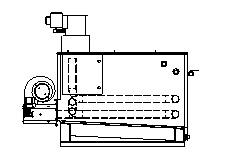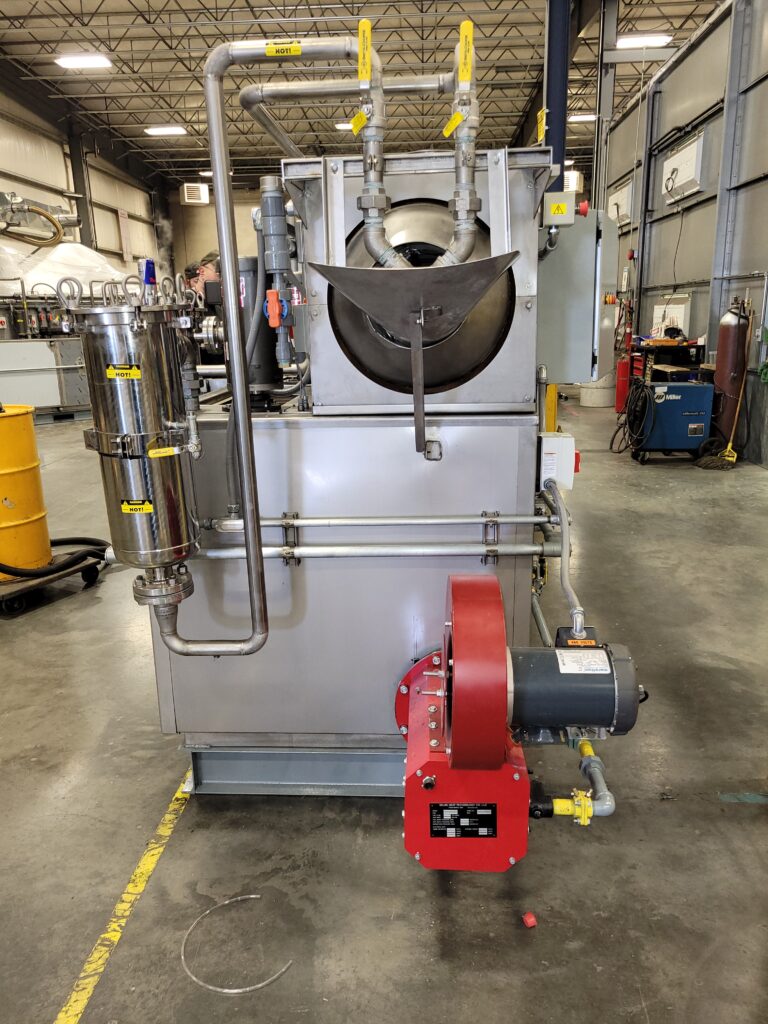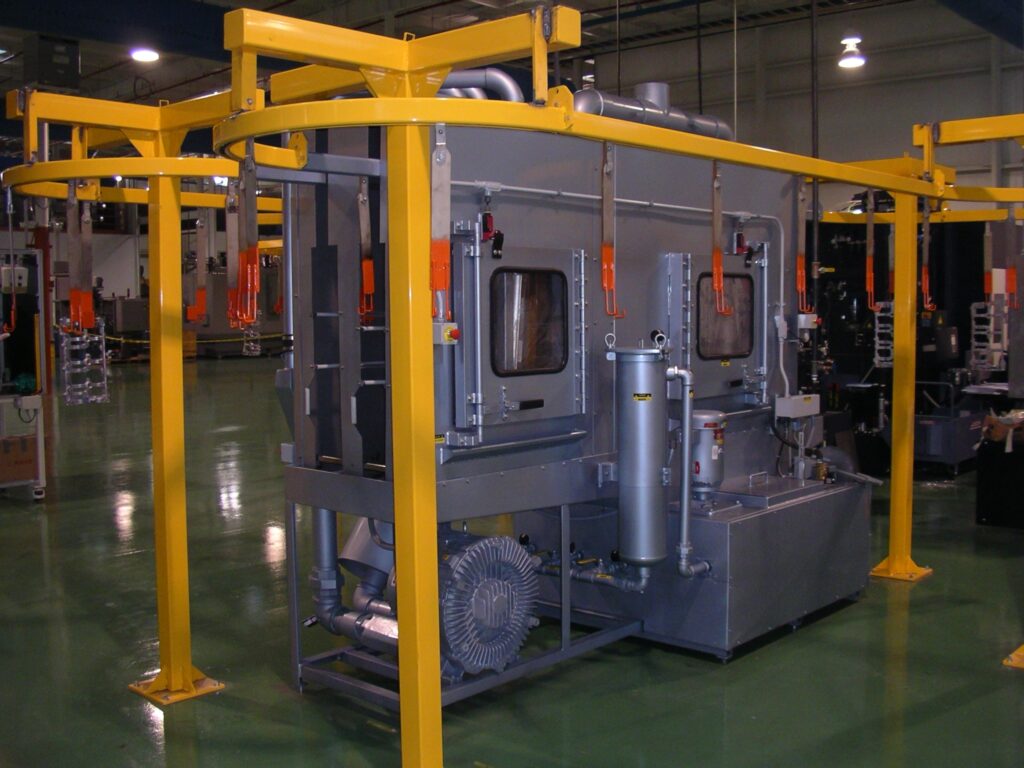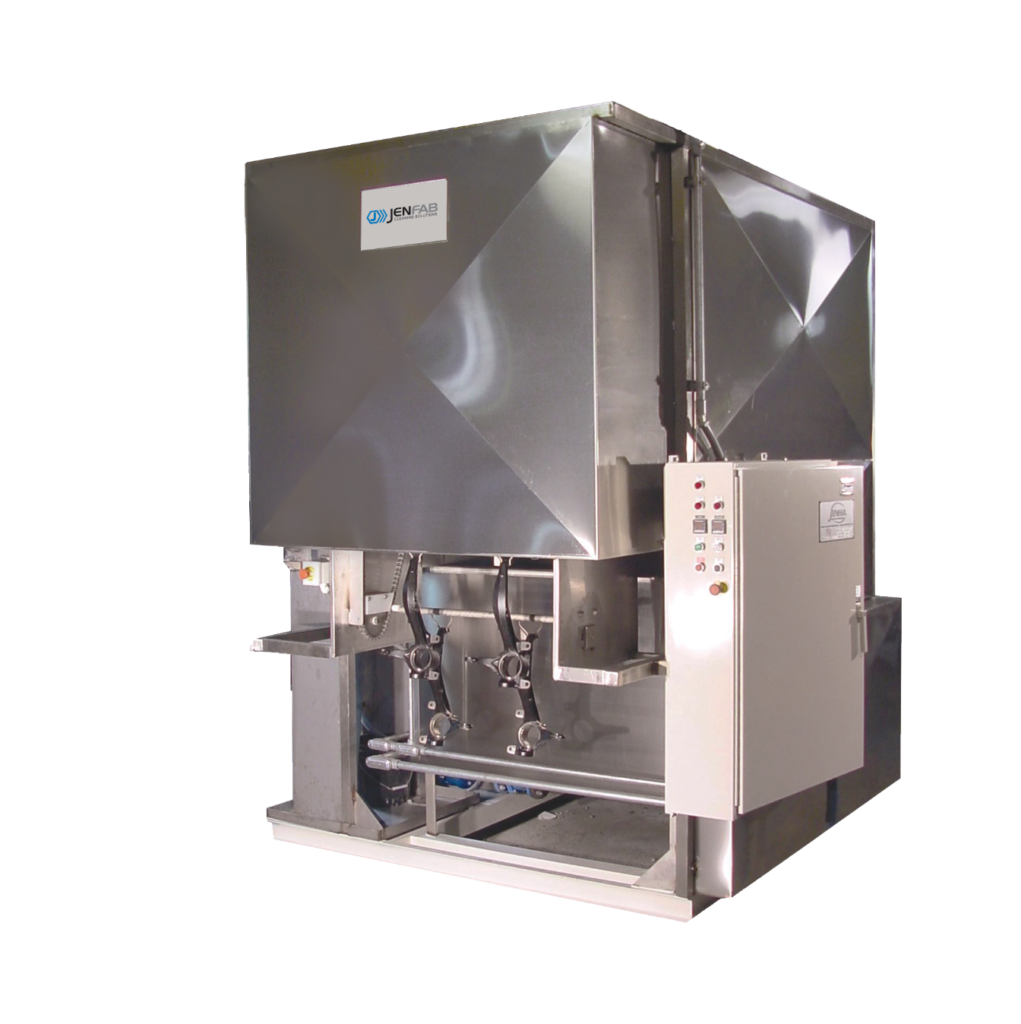For an aqueous parts washer to run like a “well-oiled machine,” you need to treat it like one. Parts washer maintenance is critical for cleaning efficiency.
Worn or broken parts affect your machine’s ability to clean, which costs you more money in the long run. Be prepared by ordering replacement parts. With spare parts on hand, you’ll be back in business in no time.
Don’t know where to start? Walk through this list of parts washer parts that often need replacing after 5 to 10 years of operation.
Know what you need? You can order spare parts online from Jenfab Cleaning Solutions. Have a bigger issue? We also offer machine repair services.
7+ Parts Washer Parts to Keep an Eye on
Everything wears down with use, including the components inside your parts washer. A hiccup with your aqueous parts washer stalls your production line. Don’t be caught off guard when something stops working correctly.
Here are seven parts washer components that may need to be replaced in your machine over time.
1. Nozzles
The nozzles inside your parts washer can get clogged. Debris comes off during cleaning and can recirculate through the sprayer’s nozzles. Abrasive solids can damage nozzles and stop your system from cleaning correctly.
When nozzles wear down, the orifice of the nozzle becomes larger. A wider opening changes the pressure of the spray, affecting the machine’s cleaning ability. Stainless steel V-jet nozzles last 8 to 12 years. Brass nozzles last about 2 years.
If you need to replace nozzles, mark the old nozzles’ angles before removing them. Each nozzle in your custom parts washer has a specific position. New nozzles should be installed at the same angles.
Order new nozzles online here.
2. Screw Plug Heaters
No heat? Big problem. Heat increases the cleaning chemistry’s rate of reaction and helps sanitize. Years of use can cause a screw plug heater to burn out or corrode. For example, a 9kw screw plug heater will last 5 to 15 years, depending on the water quality.
Most city water suppliers run hard water. Unfortunately, hard water can harm your equipment. When heated, hard water forms calcium carbonate. Buildups of calcium carbonate shorten the lifespan of your heater and reduce the efficacy of the cleaning operation.
Whatever the reason for replacement, screw plug heater installation is simple. Screw plug heaters are installed through threaded openings in the tank walls. You can remove your old screw plug heater and install a new one by following these steps:
- Turn off the system.
- Remove the old heater from the opening in the tank wall.
- Apply a sealing compound to the threads of the new heater.
- Install the new heater in the same threaded opening.
Order a screw plug heater today.
3. Fin Heating Elements & L-Shaped Heaters
Like screw plug heaters, fin heating elements and L-shaped heaters are affected by the quality of the water running through the system. Most heaters last 5 to 15 years.
Calcium carbonate deposits will build on exposed elements if you use hard water. These buildups are more prominent in alkaline systems. Other things, like air pockets, can contribute to a heating element’s burnout.
Order new heating elements here.
4. Float Switches
Float switches detect water levels. They ensure the tank doesn’t overfill or underfill. Incorrect tank levels can damage your parts washer and the components you’re cleaning. Float switches last anywhere from 5 to 10 years.
What causes a float switch to go kaput? Poor maintenance and using the wrong type of float switch for the application or electric load can quickly put you back at square one.
Dirt and debris in the system can also harm float switches or result in inaccurate readings. You must install the appropriate float switch for the type of parts washer you have and monitor it over time.
Don’t be left looking for another float switch. Be prepared with a replacement when yours stops working.
Get your spare float switch here.
5. Oil Skimmer Motors
Oil skimmers are crucial for aqueous parts washers. After cleaning, you need something to remove the oil left behind in the water. When the oil separates, a skimmer picks it up from the surface of the cleaning solution.
A motor powers an oil skimmer; like most things, the motor in your oil skimmer will go out one day. The average life of an oil skimmer motor is 10 to 15 years.
If your motor is approaching 10 years, it’s time to order a replacement, so you’re ready to roll when it stops running.
Get a premium oil skimmer motor here.
6. Pump Systems
Without pumps, aqueous cleaning solution wouldn’t circulate through the machine. Pumps bring fresh, filtered cleaning solution into the tank. If you maintain a machine’s pumps, they will last 15 to 20 years.
There are several parts related to pumps inside an aqueous cleaning system, including the pump motor, seals, couplings and bearings.
First, let’s talk about the motor. Three-phase pump motors at 1 to 5 HP last 13 to 19 years. We’ve found that three-phase motors with 5 to 20 HP have the potential to last a bit longer at 16 to 20 years. Pumps and motors have become long-lead-time supply items, so don’t wait too long before swapping them out.
When should you replace other parts of your pump system?
- Seals last 3 to 5 years. If your cleaning chemistry is aggressive, the pump seals may weaken and degrade faster.
- Coupling membranes typically need to be replaced after 10 years.
- Coupling gear can last 5 years if properly maintained.
- Bearings in continuous operation can last 5 years. Pump bearings that aren’t used as often don’t wear down as quickly. Bearings used in non-continuous operations can last up to 10 years.
- Sump pumps have an average lifespan of 10 years, but most sump pumps only last 2 to 3 years in industrial operations.
Ask our maintenance technicians when to replace parts on your machine. We’re happy to answer questions!
7. Filter Bags
Companies must replace filter bags more often than other parts washer parts. Filter bags collect debris, ensuring the cleaning solution stays fresh.
How frequently you replace filter bags depends on the solids in your system. If the parts washer cleans heavy-duty solids, you should replace the filter bag every 3 to 4 weeks. For parts washers performing lighter cleaning, you can replace the filter bag about every 3 months.
We recommend following the manufacturer’s instructions and periodically checking the filter bags to find what frequency works for your cleaning system.
You can order 200-micron, 100-micron and 50-micron filter bags from Jenfab online!
Order your replacement filter socks today.
Need Help? Parts Washer Maintenance Services
After reading this article, you know the average lifespan of certain parts vital to your aqueous cleaning system’s operation. Just because you know when to replace a part doesn’t mean you know how to replace it. Some installations are simple. Others you’d rather pass to a professional.
Jenfab Cleaning Solutions offers parts washer maintenance and machine repair services. We help your parts washer perform optimally to prevent future pauses in production.
You can call our team with questions or schedule a service visit. Tell us what you need, or have us inspect your parts cleaning machine for wear and damage.
Complete the form at the bottom of this page to connect with a technician. You may also give us a call at 800-524-9274.


















